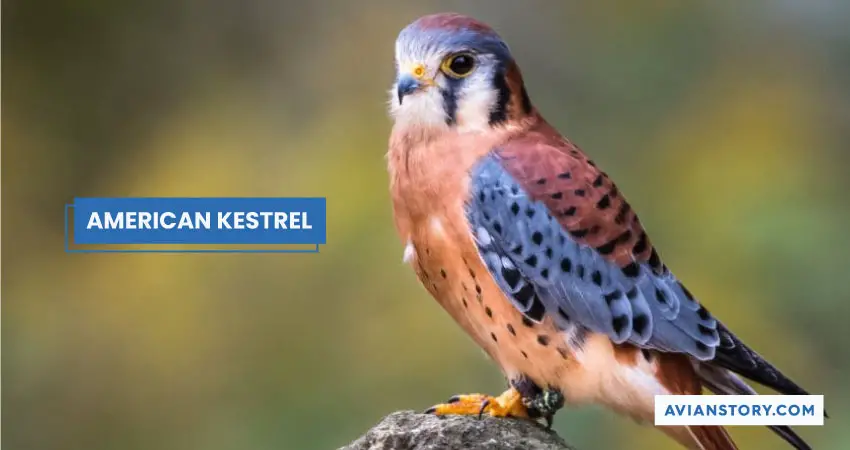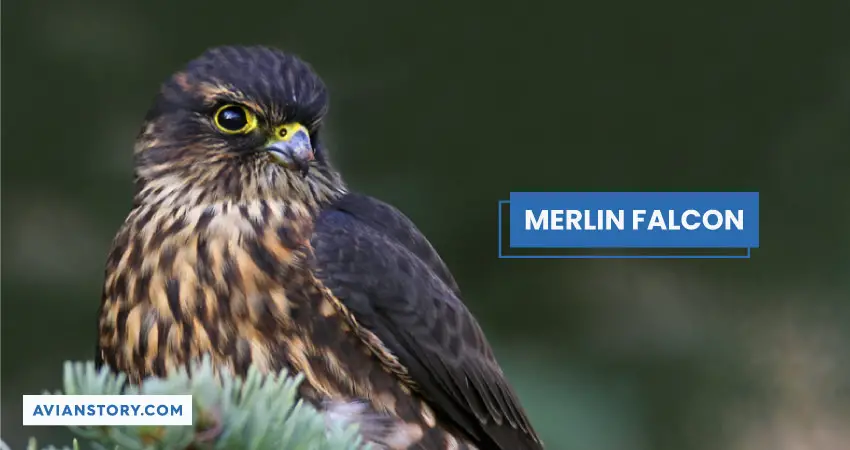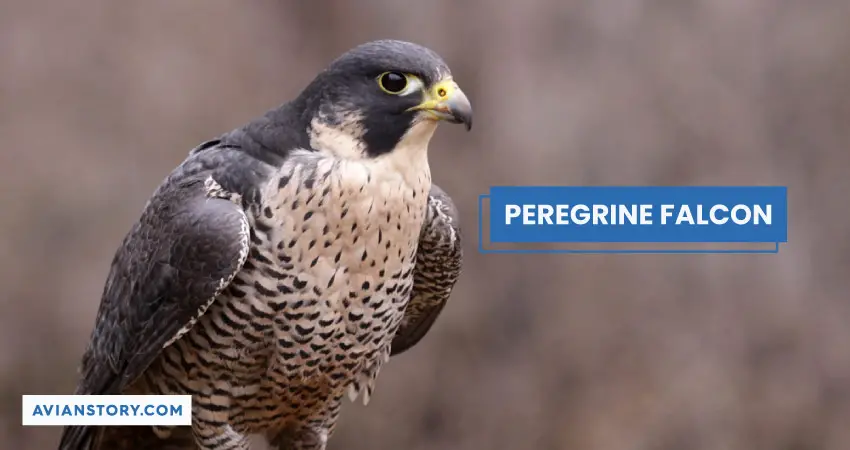3 Types of Falcons in New Jersey (With Pictures)
For birdwatchers in North America, being able to spot a falcon is one of the most boastworthy accomplishments. It is a matter of luck to be able to locate the incredibly swift and ferocious falcon. But if you’re in New Jersey, you have a higher chance of spotting one of these apex predators.
In fact, no matter where in New Jersey you are, finding a few falcon species nearby should be easy. And the following species of these marvelous birds of prey can be found in New Jersey:
- American Kestrel
- Merlin
- Peregrine Falcon.
Here’s what you need to know about the falcons in New Jersey.
American Kestrel (Falco sparverius)

- Length: 9-12 inches
- Weight: 2.8-5.8 oz.
- Wingspan: 20-24 inches
- Commonly Found in: North America, Central America, and South America
Overview
With a wingspan of about 22 inches, the smallest falcon discoverable in New Jersey is the American Kestrel, the falcon species found most commonly on the continent. Its size is comparable to that of the American Robin.
Despite its size, the American Kestrel is just as much of a ferocious hunter as its larger counterparts. They are able to hunt for sparrows (and other birds of similar stature) directly from the air. In fact, the alternate name of the American Kestrel is Sparrow Hawk!
But being the smallest species of falcon has its disadvantages as well — they are easy prey for corn snakes, rat snakes, and larger raptors.
Appearance
Unlike the majority of other falcon species, American Kestrels stand out because male and female American Kestrels don’t look alike. They have the exact same white heads with blue-gray caps; however, the similarities end there.
Female American Kestrels have wings and backs, which have a rusty sort of color, with brown barring. Their tan bellies have noticeable brown streaks running through them.
In contrast, male American Kestrels have gray or blue wings, and their flanks and bellies are white with black barring. The lower half of their rufous backs tend to have black barring.
Diet, Habitat & Behavior
The habitat of the American Kestrel is usually anywhere there is some vegetation in South America and the continental US. But in New Jersey, they can be found everywhere in the state year-round. You’ll find them in meadows, pastures, grasslands, parks, meadows, and deserts.
What’s more, American Kestrels are quite comfortable around humans; in fact, they happily raise their chicks in human-made nest boxes.
American Kestrels attack from the air by hovering above their prey at a low height as they scan the area for rodents, insects, invertebrates, and small birds, like the sparrow mentioned earlier.
The distinct call of the American Kestrel makes them easy to spot for experienced bird enthusiasts. It sounds a lot like they’re repeatedly saying, “klee-klee-klee.”
Merlin (Falco columbarius)

- Length: 9-13 inches / 23-33 cm
- Weight: 4.4-10.6 oz. / 125-300 gm
- Wingspan: 21-23 inches / 53-58 cm
- Commonly Found in: North America, Europe, and Asia
Overview
Although Merlins are not commonly observable in New Jersey, their presence in the state is widespread. Fierce despite their small size, Merlins are easily identifiable thanks to their rapid wing beats.
Merlins are known for their surreptitious attacks, which carry a high element of surprise. The ferocity of these birds is easily evidenced by the fact that they will attack even cars and trains that dare to enter their territory!
Appearance
Compared to the American Kestrel, the Merlin is slightly larger, with a short and stocky build. Its tail is of a medium length, and its wings are sharply pointed.
Male merlins have lightly colored chests, a streaky black back, and wings streaked with silver-gray. Female merlins usually have lighter coloring. Their front is whitish with brown spots, while their backs have gray-brown feathers.
Diet, Habitat & Behavior
Merlins can be found in many parts of the northern hemisphere, with habitats in Asia, Europe, and North America. Of the 9 Merlin subspecies, only the tundra merlin lives in New Jersey; they can be found almost everywhere in NJ.
Merlins will usually choose to live in heavily wooded areas, but they prefer shrublands more. They also love parks, boreal forests, coastal areas, prairies, and cemeteries. Most Merlins will migrate south in the winter.
Like other falcons, Merlins do not build their own nests. Rather, they lay their young in nests abandoned by jays, magpies, hawks, or crows.
Merlins are usually not very vocal. But their call — “klee-klee-klee” — sounds similar to that of the American Kestrel. You won’t really hear the call of the Merlin unless it is being territorial or courting.
Merlins are extremely agile and fast, which helps them to catch prey with startling ease. They love to eat insects such as moths and dragonflies, as well as voles, reptiles, and bats.
But they probably love nothing more than to make a meal out of smaller birds, such as larks, sandpipers, pipits, sparrows, or even rock pigeons — which are almost as big as Merlins!
Peregrine Falcon (Falco peregrinus)

- Length: 13-23 inches
- Weight: 12-53 oz.
- Wingspan: 29-47 inches
- Commonly Found in: Everywhere except Antarctica.
Overview
We saved the best for last! The Peregrine Falcon is the fiercest of all falcons, and they are also the fastest animal in the world. When diving, the Peregrine Falcon is capable of moving at speeds of up to 200 mph — compared to this, the cheetah’s maximum speed of 75 mph on the ground seems like child’s play.
Not to mention, peregrine falcons can start their hunt 3,000 feet in the air, where it cruises at nearly the same speed that they can dive.
So how does the peregrine falcon manage to move at such high speeds without its lungs inflating and bursting?
Because of the bump on its nose, this bony obstruction on its nose, much like the domed front of a jet engine, disrupts airflow naturally and allows the peregrine falcon to move unencumbered.
Appearance
Male and female Peregrine Falcons look quite alike, with bluish-black and slate-gray backs that have some subtle barring. Their chests are variably tan and white and streaked through with dark lines. Female peregrine falcons are larger than males, and younger birds tend to have darker coloring.
Diet, Habitat & Behavior
The main prey of the Peregrine Falcon is other birds. About 450 bird species are unlucky enough to be identified as potential prey of the Peregrine Falcon. Yes, they’ll eat almost any bird, from small ones like hummingbirds to larger avians like Sandhill Cranes. They also love to eat bats.
Although generally silent, the Peregrine Falcon does have a distinct call that sounds like “kack-kack-kack.”
You will find Peregrine Falcons almost everywhere in New Jersey, except for Antarctica; they can be found on almost every continent.
Peregrine falcons love nesting on the sides of tall buildings. For this reason, they are commonly seen in cities. But the versatility of these raptors also makes forests, mountains, coastlines, and deserts suitable habitats.
Final Words
So as we have seen, it’s pretty easy to find falcons all over New Jersey. You should be happy to spot any one of these incredible predators, but remember to wear protective gear if planning to go near, as they can be quite ferocious!
Falcons Found in Nearby States of New Jersey:
